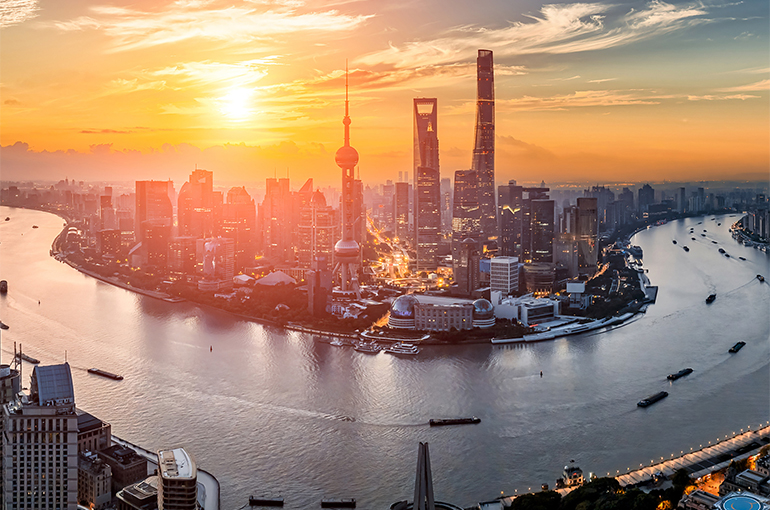 Chinese Cities Climb Kearney Global Cities Ranking
Chinese Cities Climb Kearney Global Cities Ranking(Yicai) Oct. 21 -- Chinese cities have risen strongly in the Kearney Global Cities Index, according to a report released by the consulting firm today, thanks to a recovery in international exchanges and improved digital infrastructure.
There were improvements for most regions worldwide in the latest index, reversing the declining trend of recent years. China, Latin America, and the Middle East achieved growth of over 10 percent, while North America, Europe and Asia-Pacific saw slight increases. Africa was the only region to experience a minor decline.
The Kearney Global Cities Report assesses the ability of cities to attract, retain, and generate global flows of capital, people, and ideas.
The overall score of Chinese cities increased by more than 25 percent, with Beijing ranking sixth, Shanghai ranking eighth, and Hong Kong ninth. Almost all of the 31 Chinese cities on the list had higher rankings, with Hangzhou and Chengdu entering the top 80 as global second-tier cities.
"China’s higher overall score reflects the comprehensive recovery of the international competitiveness of Chinese cities, as well as the economic resilience and potential of China’s major cities,” said Zhou Pengyuan, a partner at Kearney.
“China currently occupies three of the top 10 cities in the world and they represent China's three most important city clusters,” Zhou said. “In recent years, many cities in China have gradually found their unique paths and built international competitiveness based on their respective advantages.”
This year’s GCI added data centers and internet speed metrics, areas in which Chinese cities have an advantage. Zhou said this reflects their competitiveness in the digital economy and digital infrastructure.
In addition, industries such as electric vehicles, lithium batteries, and solar cells, which show China’s high-tech manufacturing capabilities, have also been booming in recent years. This helped with the sharp rise in the score for Chinese cities in business activity, which has the highest weighting among the five GCI categories.
The report also showed significant increases in scores for human capital, information exchange, and cultural experiences among Chinese cities last year. With the gradual pickup in consumption and cultural activities, as well as opening-up policies for domestic and inbound tourism, China has seen growth in the inflow of international talent and the development of the e-commerce and information technology industries.
Regarding the challenges of globalization for Chinese cities, Zhou said there is a need to cope with the downward pressure on the economy and the stress on youth employment. An external challenge is how to deal with the regional differentiation of global cities in a context of deglobalization.
Amid the changes in the global geopolitical and economic landscape, Zhou suggested that China’s first-tier cities should guarantee two to three outstanding aspects so as to ensure comprehensive development. The key for other cities is to find their own local advantages, he said.
Editor: Tom Litting